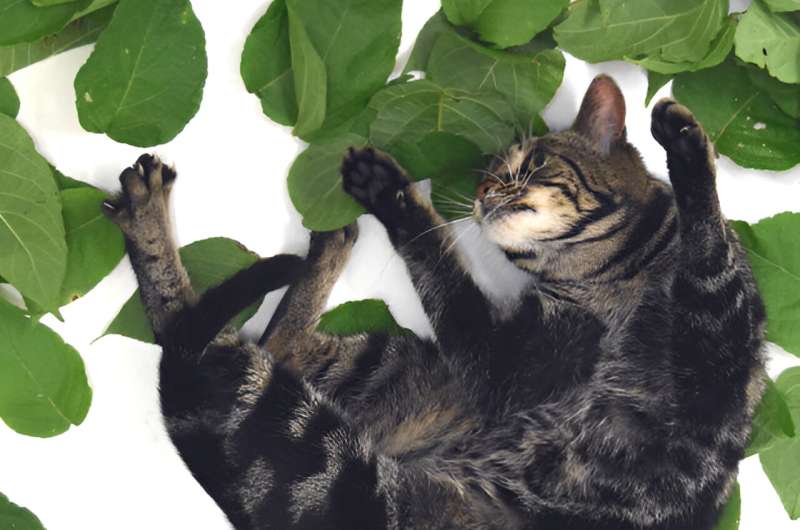This article has been reviewed according to Science X's editorial process and policies. Editors have highlighted the following attributes while ensuring the content's credibility:
fact-checked
peer-reviewed publication
proofread
Assessing the safety and suitability of using cat-attracting plants for olfactory enrichment

In a study published in iScience, a research team first examined the effects of silver vine on cats by comparing single exposure and long-term exposure to plant extracts. The cats were given access to the extract for four hours. At first, they showed the characteristic rubbing and rolling behaviors in response.
However, over time, they lost interest, stopped responding, and chose to spend most of their time away from the extract. According to Reiko Uenoyama, the first author of the paper, these results indicated a lack of "…hallmarks of addictive behavior after the response to silver vine."
They also examined the effects of long-term exposure on the cats' liver and kidney functions and found that serum biomarkers for hepatic or renal injury also remained within normal ranges among cats frequently exposed to the extract over a 3-year period. "Blood tests suggest that incorporating this plant would result in little toxicity to feline liver or kidneys," said Professor Masao Miyazaki of Iwate University, a leader of the research project and a veterinarian.
Because silver vine is an attractive stimulant for cats with no evidence to suggest health problems, the research team next investigated factors that might influence the harvesting of silver vine to produce an effective olfactory stimulant. They found that the levels of the active ingredients in silver vine varied between plant parts and were higher in fruits and green leaves than in branches and white leaves—and that the levels in green leaves were higher from May to August than in the other seasons.
Finally, the team showed that dried leaves are particularly suitable for use in olfactory enrichment products. In 2022, they had found that when silver vine leaves were crumpled and torn by cats it changed the chemical composition of the active ingredient and greatly increased the cats' response.
In the current study, they found that drying the leaves led to a similar result. "This information will be particularly valuable for preparing plant resources commercially for enrichment products, as it is only necessary to dry leaves at room temperature under atmospheric conditions and no manual crumpling or tearing is required," said Professor Miyazaki.
Silver vine and catnip plants have long been used for olfactory enrichment in cats. This new report provides scientific evidence that the repeated use of silver vine has no pathophysiological effect and does not appear to induce negative behavioral responses such as addiction or stress. The researchers are now examining why silver vine extracts affect only cats and not dogs.
More information: Reiko Uenoyama et al, Assessing the safety and suitability of using silver vine as an olfactory enrichment for cats, iScience (2023). DOI: 10.1016/j.isci.2023.107848
Journal information: iScience
Provided by Iwate University, Japan




















